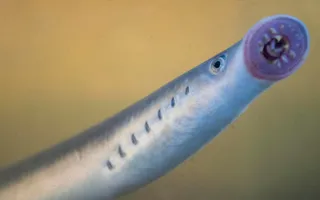The golden orfe was brought to the UK in the late 1800s. While the gold version is often found in decorative ponds and small lakes, the wild form, called the ide, can be found in some slow-moving rivers.
Golden orfe and our canals
Golden orfes have become quite a common fish in our canals, particularly those rich in vegetation. They are not native but have been introduced to many waters as ornamental fish or for angling.
How to identify a golden orfe
The golden orfe is very distinctive and strikingly beautiful, not least by its shimmering yellow-orange colouring. A medium-sized fish, it is similar in shape to a large roach, with a blunt snout, slightly upturned mouth and a white belly. They have yellow eyes with a reddish hint to their pectoral and anal fins.
Lifecycle of a golden orfe
Migrating to shallower waters, orfe spawn in late spring or early summer on stony and sandy beds when temperatures reach 7-8C. Larvae hatch within 10-20 days, feeding on planktonic animals. Males mature at five or six years, females two years later.
Where to find golden orfe
As a non-native species, golden orfe are usually only found in enclosed still waters, like ponds, lakes and our canals. They prefer calm, clear waters with lots of vegetation.
How to catch a golden orfe
Golden orfe are usually isolated to areas where they’ve been introduced and are most commonly found near the edges of the water. They tend to prefer chopped worms, although they’ll also bite other common fishing baits.
Orfe can grow quite large, so you’ll need a fishing line with a strength of 3-4lb or more, and hooks in sizes 14-16 are a good starting point. Orfe often try to jump out of a keepnet, so if the net isn’t positioned well above the water, they may escape.







